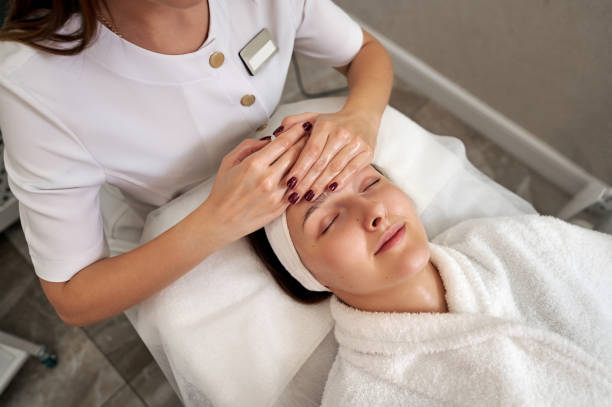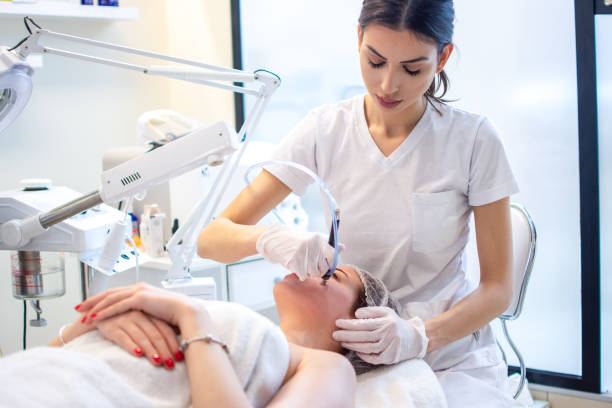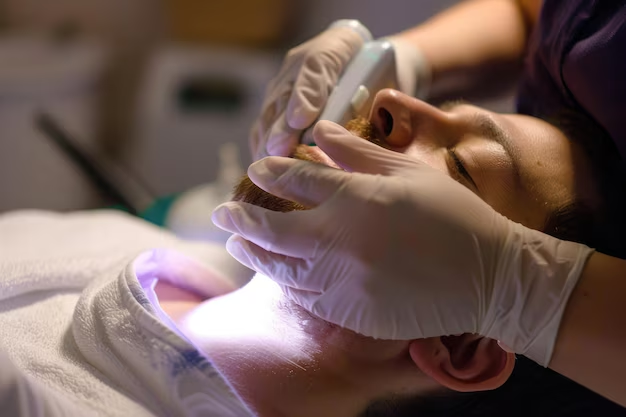
Science and art are combined by aestheticians to enhance the condition and appearance of the skin. Besides basic facials, they have expertise in many techniques for different skin types and concerns. If you know some key concepts and techniques used by aestheticians, you will understand how deep their profession is in order to make informed decisions about your skincare. We will examine some of the main notions and techniques that define an aesthetician’s work in this article.
What Are the Core Concepts of Aesthetician Practice?
Core concepts of aesthetician practice include skin analysis, personalized treatments, and client education. Aestheticians assess individual skin needs, create tailored treatment plans, and educate clients on skin care routines to maintain healthy, radiant skin.
Aesthetician practice entails understanding individual skin needs in order to address them accordingly. This begins with a comprehensive skin analysis to identify signs like dryness acne or wrinkles that can be indicative of the aging process As a result, aestheticans produce custom-made programs for treatment that involve the right methods as well as products that can yield results effectively when applied individually and consistently achieve optimal results in every case.
They also educate clients on proper skincare routines highlighting the significance of consistency with appropriate products for maintenance purposes so as not to compromise on outcomes during first-time application The mixture of expertise in the science of the skin and client-centered focus helps accomplish healthy-looking skin all around.
How Do Aestheticians Perform Skin Analysis?
Aestheticians perform skin analysis by examining the skin’s texture, tone, and underlying conditions. They use tools like magnifying lamps and skin scanners to assess issues like dehydration, acne, and aging, allowing them to customize treatments effectively.
Skin analysis is central to an aesthetician’s practice since it informs all subsequent phases of treatment. In evaluating whether someone has dryness oiliness or any other type of condition, an aesthetician visually scans the skin. They can also employ specific tools such as magnifying lamps and skin scanners which help them to get closer looks at the texture and underlying layers of the skin.
This thorough examination enables them to identify particular concerns like acne, pigmentation, or signs of aging that help in designing a plan of action. By understanding the unique needs of each client’s skin, aestheticians ensure that the chosen treatments are both effective and safe.

How Do Aestheticians Exfoliate Skin?
Aestheticians exfoliate the skin by using various methods such as chemical peels, microdermabrasion, and enzyme exfoliation, which guarantee effective skin renewal. These methods remove dead cells to reveal smoother and more radiant-looking skin that is uniquely tailored to different skin types.
Exfoliating is one of the key techniques in aesthetician practices aimed at removing dead cells and promoting skin regeneration. Chemical peels employ acids such as glycolic or salicylic acid that dissolve dead cells thereby inducing new epidermal growth. Microdermabrasion on the other hand physically removes dead cells from the surface of the skin using tiny crystals or a wand made with diamonds.
Enzyme exfoliation is another option where natural enzymes are used to break down dead skin cells without irritation. Depending on the type of the client’s skin, the aesthetician will choose the proper method of exfoliation ensuring maximum results and no damage or irritation.
How Do Aestheticians Treat Acne Problems?
Aestheticians treat acne problems, by using the treatments like extractions, chemical peels, and LED therapy while also suggesting skincare products for breakout control purposes that match each client’s unique acne severity and their own specific type of dermis.
Another focus area for esthetician practice is treatment for acne including office procedures combined with home-based instruction on taking care of your face properly. Acne-prone clients often visit aestheticians who gently and meticulously clear blocked pores through extraction. Equally, chemical peels can assist in unclogging pores through exfoliation whereas LED lights kill bacteria causing acne because they reduce inflammation too.
Additionally, an aesthetician helps select non-comedogenic products suitable for patients so as to manage their acne in the future. As a result, they provide personalized treatment solutions and professional skin care consultations for their clients in order to make them have more radiant-looking skin.
What are some of the common techniques that are used by Aestheticians in anti-aging?
Microcurrent therapy, collagen-boosting treatments, and targeted facials are all common anti-aging practices employed by Aestheticians. These methods help to reduce wrinkles, improve skin elasticity, and give a younger appearance by combining treatments when necessary.
Anti-aging treatments offered by aestheticians focus on reducing signs of aging, such as wrinkles, fine lines, and sagging skin. Microcurrent therapy involves the application of low-level electrical currents to the muscles of the face thereby toning them up and eliminating wrinkles. Other collagen boosting treatments include radiofrequency or microneedling that promotes elasticity and firmness of the skin through stimulation of collagen production.
Targeted anti-aging facials often incorporate serums rich in antioxidants and peptides which provide hydration and nourishment for the skin. The techniques mentioned above can be combined in different ways depending on specific needs thus helping people look young again.

How Do Aestheticians Customize Facials for Different Skin Types?
Facials are tailored to suit different types of skin by analyzing clients’ skin so as to settle on appropriate products and methods that would be applied during treatment sessions. These therapies are adjusted accordingly like getting moisture for dry skin or drying oils leading to oily skin thus achieving good results.
Customized facials are a hallmark of aesthetician practice, tailored to address the unique needs of each client’s skin. Proper analysis helps an aesthetician determine whether one has oily, dry sensitive, or combination types of skin among others. They then choose appropriate cleansers, masks, or serums according to this analysis.
For instance, if someone has a dry complexion he might get a hydrating mask plus nourishing oils while another with an oily texture may benefit from oil-controlling products and clay masks. This regime makes every facial treatment effective in addressing personal complaints, leaving a client with a refreshed skin that is well-proportioned.
What Role Does Client Education Play in Aesthetician Services?
Aestheticians educate their clients by offering personalized advice and products and techniques that can ensure long-term skin health and prevent future problems.
One of the important roles of an aesthetician is educating clients, which enables them to keep their skin healthy between visits. After evaluating the skin and performing treatments, aestheticians guide patients on daily skincare routines meant for them only. This entails selecting appropriate products such as cleansers, moisturizers, and sunscreens as well as illustrating application methods.
Additionally, they give advice on lifestyle aspects like dieting, hydration, and sunscreen which affect the quality of one’s skin. By doing so, aestheticians teach their clients how to take care of their skins well thus sustaining the benefits of professional treatments for a lifetime.
Wrapping Up!
Skincare services offered by aestheticians are built around knowledge as well as technical expertise combined with client education. Through mastering core concepts such as skin analysis, exfoliation, or personalized treatments; they strive for healthy glowing skin. Therefore these concepts not only demonstrate aesthetic scientists’ skills but also empower clients to select appropriate skincare products intentionally. In this way, you get permanent benefits from your care through an individualized approach to your epidermis’s health under guidance.
